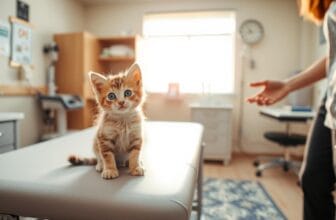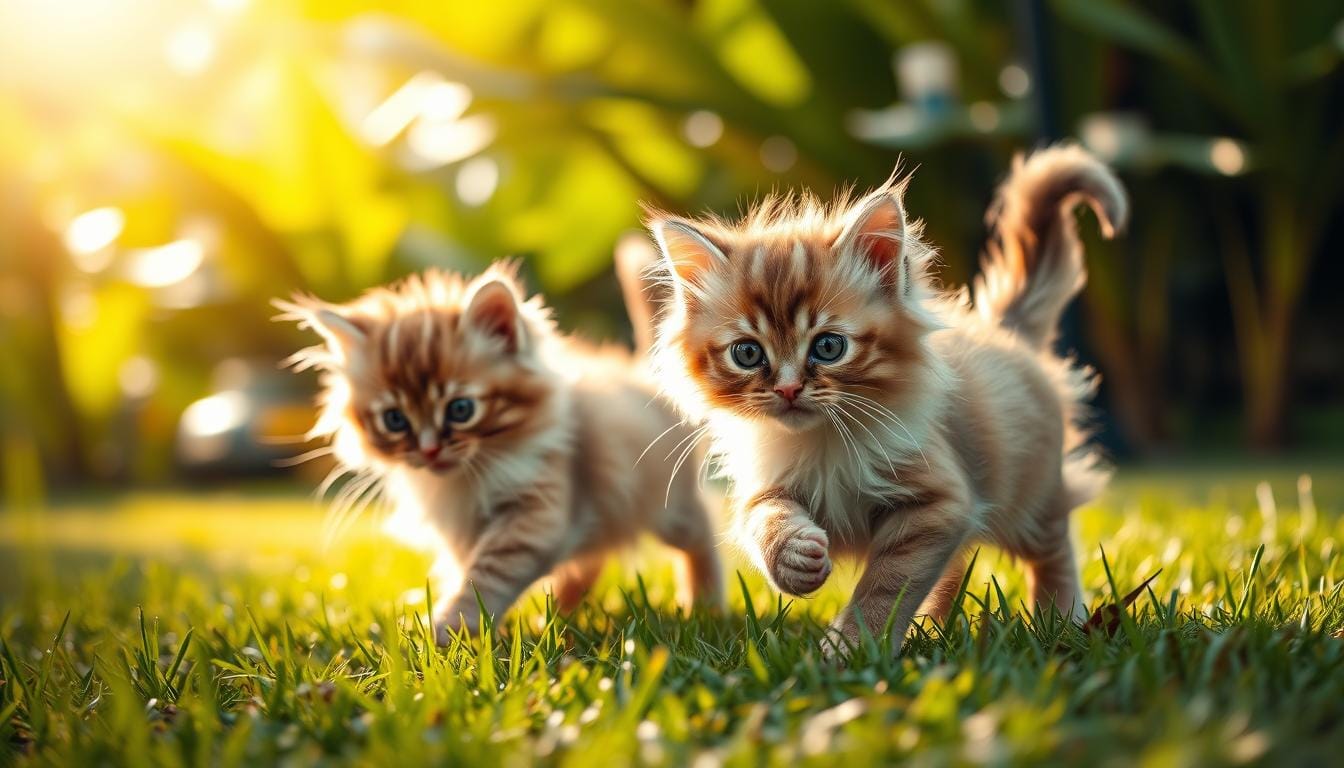
Table of Contents
Did you know that some cats can live up to 20 years with proper care? Among these long-lived breeds is the Balinese, a stunning feline known for its elegance and intelligence. These cats are descendants of the Siamese breed, inheriting their striking sapphire-blue eyes and silky, medium-length coats.
Recognized by major cat associations like CFA, FIFe, and TICA, the Balinese is celebrated for its social and vocal nature. They thrive in family environments, forming strong bonds with their owners. Their intelligence makes them quick learners, often surprising you with their problem-solving skills.
With a lifespan of 12 to 20 years, these cats require consistent care to maintain their health and vitality. Their playful and affectionate demeanor makes them ideal companions for those seeking a loyal and engaging pet. In this article, we’ll explore their unique traits, personality, and essential care tips to help you understand why this breed stands out.
Introduction to Balinese Kittens
Originating in the 1940s, the Balinese cat is a result of a natural genetic mutation in Siamese litters. This breed was initially called the “Long-haired Siamese” before being rebranded in the 1950s. Its name was inspired by the graceful movements of Balinese temple dancers, reflecting its elegant demeanor.
During the 1950s, dedicated breeding programs helped establish the Balinese as a separate breed. This move sparked some controversy between purists who preferred the traditional Siamese and modern breeders who embraced the new type. Today, the Balinese is recognized by all major cat registries, solidifying its place in feline history.
Interestingly, non-traditional color points in this breed are classified as Javanese. This distinction highlights the diversity within the Balinese lineage. Below is a table summarizing the major cat registries that recognize this elegant type:
| Registry | Recognition Year |
|---|---|
| CFA (Cat Fanciers’ Association) | 1961 |
| FIFe (Fédération Internationale Féline) | 1983 |
| TICA (The International Cat Association) | 1979 |
The Balinese cat’s journey from a Siamese mutation to a celebrated breed is a testament to its unique charm and adaptability. Its rich history and recognition by prestigious organizations make it a standout choice for cat enthusiasts.
What Makes Balinese Kittens Unique?
There’s something truly special about cats that combine beauty and brains. This breed stands out not only for its striking appearance but also for its fascinating history and distinctive traits. Let’s dive into what makes these cats so unique.
Their Siamese Heritage
These cats share a close lineage with the Siamese breed, inheriting many of their defining characteristics. Their coat is medium-length and silky, lacking an undercoat, which makes grooming easier. The plumed tail is a signature feature, adding to their graceful appearance.
Their eyes are another standout trait. These almond-shaped, sapphire-blue eyes can vary in intensity based on age and diet. As kittens, their color-point patterns develop over time, usually becoming visible after four weeks.
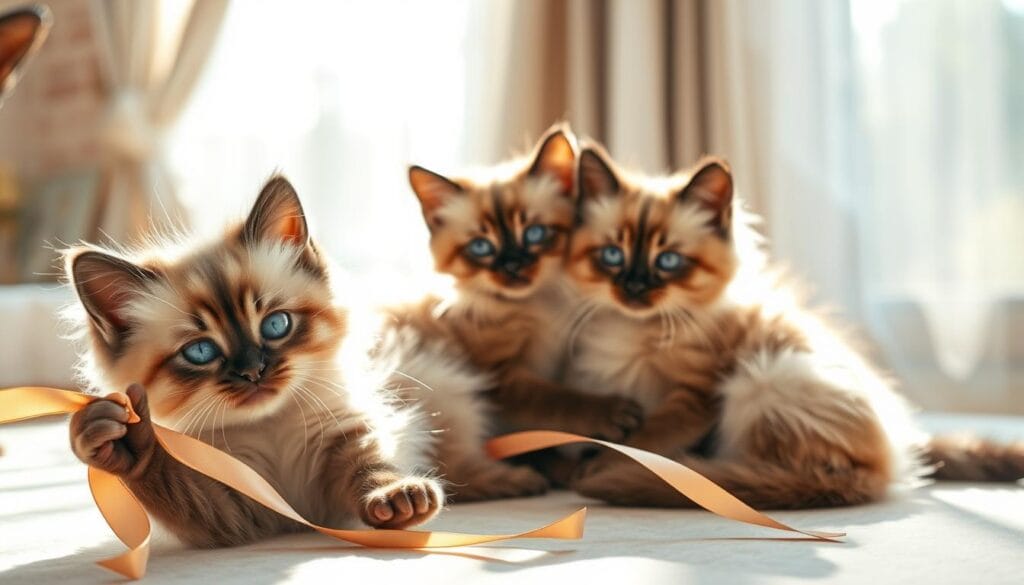
Distinctive Physical Traits
This breed’s physical features are both elegant and functional. Their large ears and oval paws give them a refined look. The paw pad colors often match their point patterns, making it easy to identify their unique markings.
Their face is wedge-shaped, complementing their sleek body and long legs. Seasonal shedding is minimal, but their coat can be affected by climate changes. Regular brushing helps maintain its silky texture.
| Feature | Description |
|---|---|
| Coat | Medium-length, no undercoat |
| Tail | Plumed, elegant |
| Eyes | Almond-shaped, blue |
| Ears | Large, pointed |
| Face | Wedge-shaped |
| Legs | Long, slender |
From their striking eyes to their graceful movements, every aspect of this breed exudes elegance. Their unique combination of traits makes them a favorite among cat enthusiasts.
The Personality of Balinese Kittens
When it comes to feline personalities, few breeds are as engaging as this one. Known for their playful and intelligent nature, these cats bring joy and energy to any home. Their social and vocal tendencies make them stand out as unique companions.
Playful and Intelligent
These cats are natural problem-solvers, often surprising you with their cleverness. They enjoy interactive play sessions, which help keep their minds sharp. Providing toys and puzzles can keep them entertained for hours.
Their playful nature makes them excellent pets for active households. However, they also thrive on human interaction. Spending time with them daily strengthens your bond and keeps them happy.
Social and Vocal
This breed is 60% more vocal than average cats. They communicate through trilling and chirping, often “talking” to their owners. Their social nature makes them thrive in family environments.
They crave constant attention and can develop separation anxiety if left alone for more than four hours. Gradual introductions to other pets are recommended, as 85% adapt well to multi-pet households.
| Trait | Description |
|---|---|
| Vocalization | 60% more vocal than average cats |
| Social Behavior | Thrives in family and multi-pet households |
| Attention Needs | Requires constant interaction |
These cats are not ideal for homes with frequent travel. Their need for companionship and stimulation makes them best suited for households where they can receive plenty of love and care.
Caring for Your Balinese Kitten
Proper care ensures your feline friend stays healthy and happy for years to come. From grooming to diet, every aspect of their routine plays a role in their overall well-being. Let’s explore how you can provide the best care for your cat.
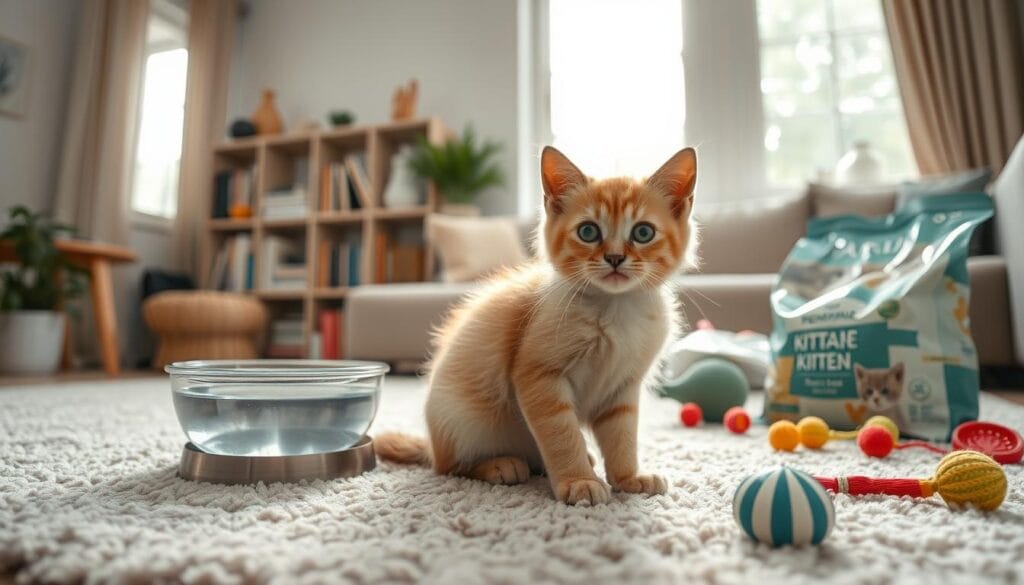
Balinese Kittens Grooming Needs
Regular grooming keeps your cat’s coat silky and free of tangles. Their medium-length fur requires brushing at least twice a week. This not only prevents matting but also reduces shedding around your home.
Pay attention to their ears and nails. Clean their ears gently with a damp cloth, and trim their nails every few weeks. These small steps ensure your cat stays comfortable and healthy.
Balinese Kittens Diet and Nutrition
A balanced diet is crucial for your cat’s health. Depending on their age and activity level, they need 200-300 calories daily. High-protein, grain-free formulas are ideal, as they mimic their natural food preferences.
Portion control is key to maintaining a healthy weight. Scheduled feedings work better than free-choice feeding, as they prevent overeating. Always provide fresh water, especially if you’re feeding dry food.
Be mindful of potential allergens. Chicken and fish are common triggers, affecting 34% of cats. If you notice any signs of allergies, consult your vet for alternative options.
Health Considerations for Balinese Kittens
Ensuring your feline companion stays healthy requires attention to their specific needs. Like all breeds, they may face certain health challenges. Understanding these issues and taking preventive steps can help your cat live a long, happy life.
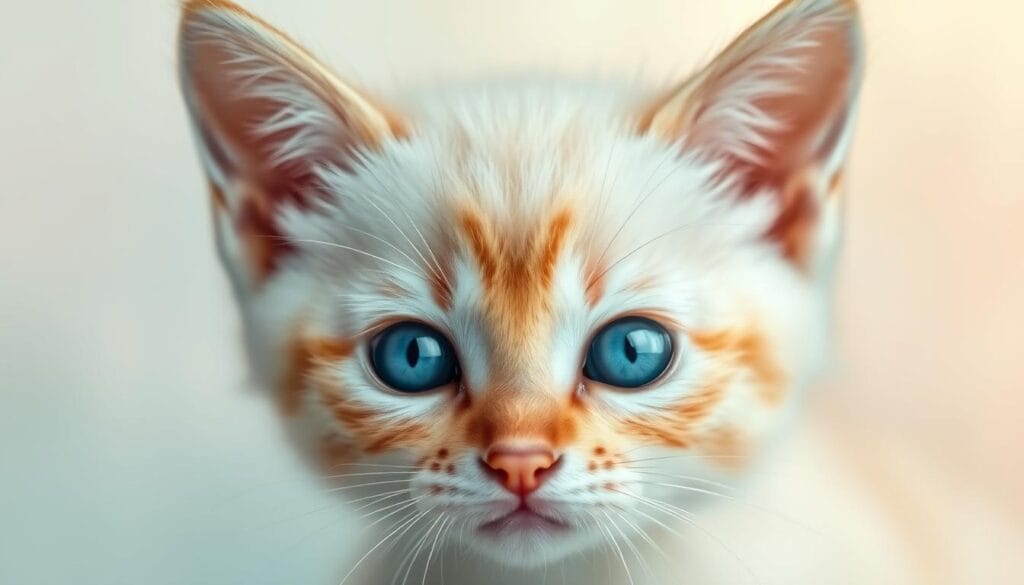
Balinese Kittens Common Health Issues
This breed is generally healthy, but they can be prone to certain conditions. Annual echocardiograms are recommended after age five to monitor heart health. Dental issues and respiratory problems are also common, so regular checkups are essential.
DNA testing can identify breed-specific concerns early. This proactive approach allows you to address potential issues before they become serious. Staying informed about your cat’s health history is key to providing the best care.
Balinese Kittens Preventive Care
Preventive measures are crucial for maintaining your cat’s well-being. Vaccinations, such as rabies and FVRCP, should be administered on schedule. Bi-annual senior exams are advised after age seven to catch any age-related concerns early.
Pet insurance is a valuable investment, covering unexpected medical expenses. It ensures your cat receives the best care without financial strain. Below is a summary of preventive measures to keep your feline friend healthy:
| Preventive Measure | Frequency |
|---|---|
| Echocardiograms | Annually after age 5 |
| Vaccines (Rabies, FVRCP) | Per schedule |
| Senior Exams | Bi-annually after age 7 |
| Dental Checkups | Annually |
By staying proactive and working closely with your vet, you can ensure your cat enjoys a healthy, fulfilling life. Regular checkups and preventive care are the foundation of their well-being.
Why Balinese Kittens Make Great Pets
Looking for a pet that’s both elegant and easy to care for? This breed combines beauty with brains, making it a top choice for families and individuals alike. Their low-maintenance grooming needs and engaging personality ensure they fit seamlessly into your lifestyle.
Family-Friendly Companions
These cats thrive in family environments, forming strong bonds with both adults and children. Their playful nature makes them ideal for households with kids, while their intelligence allows them to adapt to various routines. With proper care, they become lifelong companions.
One standout feature is their quick learning ability. Studies show that 65% of this breed can learn tricks within two weeks. This makes training sessions both fun and rewarding for the whole family.
Low-Maintenance Yet Engaging
Ranked #3 among low-grooming longhair breeds, these cats require minimal maintenance. Their silky coat needs brushing just twice a week, saving you time and effort. Despite their easy grooming, they have high social needs, craving interaction and attention.
For busy owners, automated toys can keep them entertained during the day. They also adapt well to leash walking, making them great companions for outdoor exercise and play.
| Trait | Details |
|---|---|
| Grooming Needs | Brushing twice a week |
| Training Success | 65% learn tricks in 2 weeks |
| Litter Training | 80% report easy training |
| Social Needs | High, thrives on interaction |
From their adaptability to their affectionate nature, this breed offers the perfect balance of independence and companionship. Whether you’re a first-time pet owner or a seasoned cat lover, they’re sure to bring joy to your home.
Conclusion
Choosing the right feline companion can transform your home into a lively, loving space. Balinese cats offer a unique blend of elegance and affection, making them ideal pets for families and individuals alike. With an average adoption satisfaction rating of 4.8/5 stars, it’s no surprise that 75% of owners adopt a second one.
This breed thrives on interaction and requires a commitment to long-term care. Their vocal nature and social personality mean they’re happiest in homes where they receive plenty of attention. If you’re considering adoption, explore reputable breeders or rescue options to find your perfect match.
Before making a decision, meet the cats in person to ensure compatibility. Their striking appearance and engaging demeanor make them a joy to have around. With proper health management and love, your new companion will bring years of happiness to your life.
FAQ
What is the origin of the Balinese breed?
The Balinese breed originated from the Siamese cat. It is essentially a long-haired variant of the Siamese, with its unique traits developed through selective breeding.
How does the Balinese cat differ from the Siamese?
While the Balinese shares many traits with the Siamese, it has a longer coat, a plumed tail, and a slightly different body type. Both breeds share similar color points and vocal personalities.
Are Balinese cats good with families?
Yes, Balinese cats are known for their affectionate and social nature. They thrive in family environments and enjoy interacting with both adults and children.
What are the grooming needs of a Balinese cat?
Despite their longer coat, Balinese cats have minimal grooming needs. Regular brushing helps prevent tangles and keeps their coat shiny and healthy.
What health issues are common in Balinese cats?
Balinese cats may be prone to certain health conditions like progressive retinal atrophy and dental issues. Regular vet check-ups and preventive care are essential for their well-being.
How vocal are Balinese cats?
Balinese cats are highly vocal and enjoy communicating with their owners. Their meows are often soft and melodic, making them engaging companions.
What should I feed my Balinese kitten?
A balanced diet rich in high-quality protein is ideal for Balinese kittens. Consult your vet to ensure their nutritional needs are met for optimal growth and health.
Are Balinese cats low-maintenance pets?
While they are relatively low-maintenance in terms of grooming, Balinese cats require mental stimulation and social interaction to stay happy and healthy.






